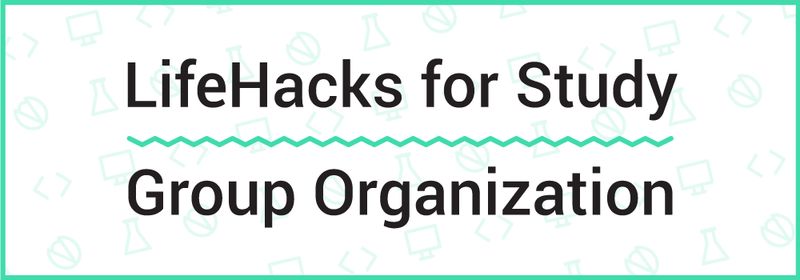LifeHacks for Study Group Organization
How do study groups work?
No, really!?
Does one person usually do all the work of reading the material and breaking it down for your teammates, or does your group break up the load and work on it as a team?
Nowadays, you may often hear the words “Google Docs" and nod. Indeed, it often works quite well for study group organization; type up some information, share it with others, and together the group can come together to work on the material as a team. However, there are several issues we often encounter with this workflow.
Issues with Shared Documents
1. Individuals with access to the doc don’t always receive a notification that the material in the doc has been altered, and if they do, it comes in the (too) subtle form of a bolding of the doc’s title in Google Drive. This become particularly annoying as you near due dates; you think the doc is ready for submission, only to find that an entire section has been removed or changed without your knowledge.
2. Scrolling also becomes an issue, as students can’t just click and select one section of the doc containing the notes they’re interested in. Instead, if you want the peace of freedom from extraneous information, you have to copy and paste that information out of its crowded, ever-changing environment into something more appealing.
3. Lastly, the frustration of someone else writing over/changing something you wrote without telling you is real, especially since those notifications don’t explicitly clarify what’s different. You have to bear with shifts in spacing, formatting, and gaps in writing as team members take it upon themselves to edit your unfinished work.

Simple Solutions to Group Work
An Evernote/Postach.io model works differently though. Instead of creating a doc for everyone to jump straight into and muddle around in, an Evernote notebook can be used to organize your group work from start to finish and publish it to a class blog for easy review. Once the project is ready, it can then be submitted directly through Postach.io in an attractive theme. Here’s how:
1. Dividing Team Workload
Let’s say we divide the material equally and everyone is to write and share notes on their respective chapter. As a first step, someone will create an Evernote notebook and then share it with all of the other team members. Each student then logs a note on their section, and then tags the note with “published" when they're ready for review. After syncing Evernote, this note is then instantaneously published to the class blog on Postach.io. Here’s a video if you’re still in disbelief about how it works.
Worried about privacy? Easily keep your insider jokes on the inside by password protecting your blog.
Done and done.
2. Seamless Review
Instead of having to scroll through a Google Doc for minutes, only to have the entire document jolt up and down as other people log on and type, you can select one of the sections and read it comfortably in a Postach.io theme of your choice. There’s no copy and pasting. No downloading. If a new post has been made and the author has decided it's good to go, they’ll simply add the tag ‘published’, and you’ll see it on the blog - the effect a place to review without interruptions.
3. Conflict-Free Editing
Instead of instantly clamouring into edit mode as soon as a new section is added, you can share feedback on each other's work through the Disqus commenting system integrated into the blog. This gives the original author a chance to support their reasoning or gain legitimate insight front team members before changes are made without warning. Thus, no more instances of finding out that an entire section of your report has been removed without your consent after you spent two hours perfecting it…arrgggg!
4. Perfecting Your Portfolio
Here’s another bonus you've probably never considered: once you've published your documents to Postach.io as a group, they will look much more professional and visually appealing than in a boring text document. Imagine yourself in the future, when you want to show a potential employer a crafty display of teamwork and collaboration; all you’ll have to do is send them a link to your team Postach.io blog, and you’ll have proven your point ;).
This called making your education work for you!
Can you say #worthit?
Aida is a rising junior at Texas A&M studying Geography, and minoring in English and Sociology. She is a major reader, and heavily interested in the world and what's going on. Unabashed feminist and observer, Aida pursues many passions both inside of school and outside of school. Inside A&M, she is the Prose Editor for the Texas A&M literary magazine, The Eckleburg Project, an executive board member for the university’s undergraduate research journal, Explorations, and is a co-coordinator for the Geography Society. Aida is also has a job as a teaching assistant for a writing intensive course. Outside the university, she writes for the college- and high school-oriented online magazine, The Prospect. All of these opportunities aid her goals in learning and collaborating with other lifelong learners.